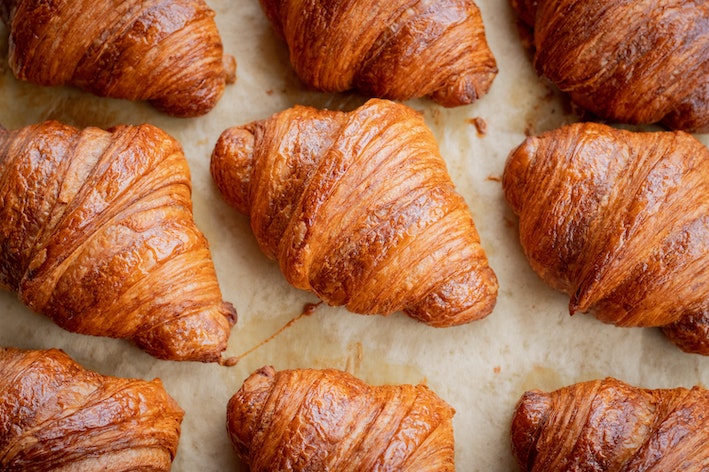Pastry Varieties To Try Making At Home

As the year starts to wind down, we can begin to fill our time with family-based activities. Some, like to decorate gingerbread houses together. Others, try their hand at festive crafts. And, the rest? Well, they’re ready to bake something new. If you fall into that category then you’re going to love today’s blog all about pastry and its many varieties. Plus, we share some tips on how to make them in your own kitchen!
What is Pastry?
Pastry is a dough made of flour, water and shortening (solid fats including butter or lard). It may be savoury or sweetened. Common dishes include pies, tarts, quiches, croissants, and pasties. The tradition of making dates back to the Mediterranean in the ancient times of Romans, Greeks, and Phoenicians. However, the first recipe didn’t appear until the mid-16th century.
Pastry dough has a flaky or crumbly texture and therefore differentiates from bread by having a higher fat content. A good baked dough is light, airy, and fatty, but firm enough to support the weight of the filling. Essentially, it gets its characteristic texture and flavour from the wonderful world of cooking chemistry.

The Science
Different kinds of pastries utilise the natural characteristics of wheat flour and certain fats. Like with making bread, when flour mixes with water into a plain dough, it develops strands of gluten. Thus, allowing the bread to be tough and elastic.
However, this is not the desired outcome of pastry-making. So, we add fat or oil to slow down the development of gluten. Lard or suet have a coarse crystalline structure which is very effective. Or, clarified butter or ghee is virtually water-free and creates a thin layer between the grains when its melts.
This is what allows the various types of pastries to exist. Let’s discover what those are!

The Various Varieties
A pastry comes in all shapes, sizes and textures. Check out our non-exhaustive, and some tips on how to make each type.
- Shortcrust – the simplest and most common. Used mainly in tarts. Make with flour, fat, butter, salt, and water to bind the dough. Start by mixing the fat and the flour, add water, and roll out the paste. Mixing these ingredients first inhibits the formation of gluten.
- Flaky – another simple pastry that expands when cooked because of the number of layers. When baked, it’s crisp and buttery. This textures comes from shard-like layer of fat in the dough which expand in the oven when baked.
- Puff – similar to flaky, this dough has many layers and has a light, flaky, and tender texture. It employs what’s known as a “laminated dough” consisting of thin layers of dough separated by thin layers of butter. It gets its puff due to the water and fats expanding as they turn into steam upon heating.
- Choux – a very light texture often filled with cream. Unlike the other types on this list, it is closer to a dough before being cooked which allows it to pipe into various shapes such as the éclair and the profiterole. To make, start with a mixture of milk or water and butter, and heat until the butter melts. Then, add flour to form a dough. Next, beaten eggs join the dough to further enrich it. Bake until the dough had expanded and create a small hole to allow the steam of the water out. Then, place back in the oven to dry out and crisp.
- Phyllo – another layer-y delight. Generally, this pastry is wrapped around a filling and brushed with butter before baking. It offers a delicate flaky texture.
- Hot water crust – used for savoury pies. The usual ingredients include: hot water, lard, and flour. Simply heat and melt the water and water and fat, then mix in the flour.
Which pastry will your try your hand at?